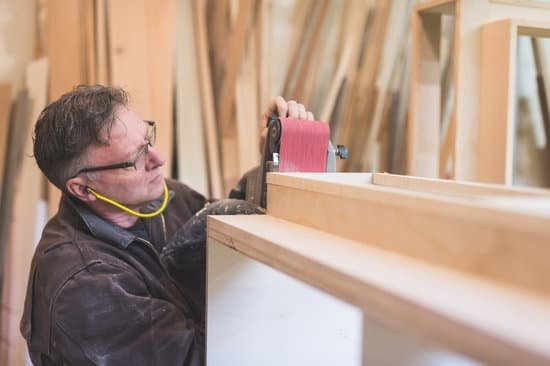Are you a woodworking enthusiast looking to take your craft to the next level? If so, learning how to build woodworking bench is an essential skill that can greatly enhance your projects.
A sturdy and reliable woodworking bench is the foundation for any successful woodworking endeavor, providing a stable and secure work surface for all your cutting, shaping, and assembly needs. In this comprehensive guide, we will walk you through the process of building your own woodworking bench step by step, from selecting the right wood to adding essential features and finishing touches.
A high-quality woodworking bench is a crucial tool for anyone serious about honing their skills in carpentry or joinery. Whether you’re a seasoned professional or just starting out as a hobbyist, having a well-constructed bench can make all the difference in the precision and quality of your work.
It provides stability for hand-tool use, offers storage solutions for tools and materials, and can even serve as an additional work surface when needed. With the proper guidance and materials, you can create a custom-built bench that perfectly suits your individual needs and preferences.
Throughout this article, we will delve into every aspect of building a woodworking bench, from selecting the right wood for durability and stability to choosing the necessary tools and materials for construction. We will guide you through creating a blueprint for your bench design, constructing its base, adding essential features such as vices and clamps, as well as sanding and finishing techniques to ensure long-lasting durability.
By the end of this guide, you’ll be equipped with valuable tips on maintaining your woodworking bench so that it continues to serve as an indispensable asset in your crafting journey.
Selecting the Right Wood for Your Bench
When building a woodworking bench, it is crucial to select the right type of wood for your project. The most common types of wood used for benches are hardwoods such as oak, maple, and cherry. These woods are known for their durability and resistance to wear and tear, making them ideal for a sturdy woodworking bench. Softwoods like pine can also be used, but they may not be as durable over time.
In addition to the type of wood, it is important to consider the qualities of the wood you choose. Look for straight grain patterns with minimal knots and imperfections, as these can weaken the overall structure of the bench. The wood should also be properly dried to prevent warping or cracking once the bench is assembled.
To determine the amount of wood needed for your project, calculate the dimensions of your desired bench and add a little extra material for any unexpected mistakes or adjustments during construction. Once you have selected the right type of wood with suitable qualities, you can move on to preparing and cutting the materials before assembling your woodworking bench.
| Wood Type | Durability |
|---|---|
| Oak | High |
| Maple | High |
| Cherry | High |
| Pine | Medium |
By carefully considering these factors when selecting your wood, you can ensure that your finished woodworking bench will be both functional and long-lasting, providing you with a reliable workspace for all your future projects.
Tools and Materials Needed for Building Your Woodworking Bench
Building a sturdy and reliable woodworking bench requires the use of the right tools and materials. The first step in embarking on this project is to gather all the necessary equipment and supplies. Some of the essential tools needed for building a woodworking bench include a saw, drill, chisel, mallet, tape measure, square, and clamps. Additionally, you will also need woodworking glue, screws, sandpaper, wood finish or varnish, and a selection of high-quality wood.
When it comes to selecting the wood for your bench, it’s important to choose a type that is strong, durable, and able to withstand heavy use. Hardwoods such as oak, maple, or beech are popular choices due to their strength and resilience. Softwoods like pine can also be used if properly treated and reinforced. It’s crucial to carefully examine each piece of wood for any imperfections or weaknesses before starting the construction process.
In addition to these basic tools and materials, it’s recommended to invest in a good set of plans or blueprints to guide you through the construction process. These plans will outline the precise measurements and dimensions needed for your woodworking bench, as well as provide step-by-step instructions for assembly. With the right tools and materials at hand, you can proceed with confidence in building a woodworking bench that is not only functional but also built to last.
Design and Measurements
When it comes to building a woodworking bench, one of the most crucial steps is creating a detailed blueprint for your design. The design and measurements phase sets the foundation for the entire project, ensuring that your bench is not only sturdy but also functional for all your woodworking needs.
To begin, consider the space where you plan to place your woodworking bench. Measure the area carefully to determine the dimensions that will work best for the available space. Take into account the height of the bench as well, ensuring that it is comfortable for you to work on for extended periods of time. Additionally, think about any specific features or attachments you may want to include in your design, such as storage shelves or built-in vices.
Once you have determined the overall size and features you want for your woodworking bench, it’s time to create a detailed blueprint. This can be done using drafting tools or computer software designed for woodworking plans. Make sure to include precise measurements and angles in your blueprint, as these will be crucial during the construction phase.
Taking the time to carefully design and measure your woodworking bench before construction will ultimately save you time and effort in the long run. A well-thought-out blueprint will serve as a guide throughout the building process, helping you create a sturdy and functional bench that meets all of your woodworking needs.
Step-by-Step Construction
Building the base of your woodworking bench is a crucial step in creating a sturdy and reliable workspace for all your woodworking projects. The base serves as the foundation of the bench, providing stability and support for all your work. In this section, we will discuss the step-by-step process of constructing the base of your woodworking bench.
Gathering Materials
Before you begin building the base of your woodworking bench, gather all the necessary materials and tools. You will need lumber for the legs and stretchers, screws or dowels for assembly, a drill/driver, and measuring tools. Make sure to select high-quality hardwood that can withstand heavy use and provide excellent support.
Cutting and Assembling
Start by cutting the lumber to the appropriate lengths according to your design blueprint. Once you have all the pieces cut to size, begin assembling the base using screws or dowels for added strength. Pay close attention to ensuring that all joints are square and secure to prevent any wobbling or instability in your finished bench.
Adding Reinforcements
To further reinforce the base of your woodworking bench, consider adding cross-braces or diagonal supports for additional stability. These reinforcements will help distribute weight evenly across the base and prevent any warping or shifting over time. Take extra care in this step to ensure that all connections are secure and tight.
By following these steps for building the base of your woodworking bench, you can create a strong and durable foundation that will support you through countless woodworking projects.
Adding Essential Features
When building a woodworking bench, adding essential features like vices, clamps, and storage options can greatly enhance its functionality and usability. Here are some key features to consider incorporating into your woodworking bench:
1. Vices: A vice is an essential feature for any woodworking bench as it provides a solid grip for holding workpieces in place while you saw, chisel, or plane them. There are different types of vices to choose from, including front vises, end vises, and tail vises. Consider the type of woodworking projects you will be working on to determine which vice is best suited for your needs.
2. Clamps: In addition to a vice, having clamps on your woodworking bench can provide extra support and stability when working with larger or irregularly shaped workpieces. Clamps come in various sizes and styles, including C-clamps, bar clamps, and spring clamps. Having a variety of clamps at your disposal will ensure that you have the right tool for any project.
3. Storage Options: Keeping your tools and supplies organized is essential for a functional workspace. Consider adding built-in storage options to your woodworking bench such as drawers, shelves, or pegboards. This will help keep your work area clutter-free and make it easier to access the tools you need while working on your projects.
Incorporating these essential features into your woodworking bench will not only make it more versatile but also create a more efficient and enjoyable workspace for all your future woodworking endeavors.
Remember – always consider safety when integrating these features into your bench.
Sanding and Finishing
Sourcing the Right Sandpaper
When it comes to sanding your woodworking bench, the right sandpaper is essential. For initial rough sanding, start with a lower grit sandpaper, such as 60 or 80 grit, to remove any imperfections and rough spots. As you progress, move on to higher grits, such as 120 or 150, for smoothing out the surface and achieving a finer finish. Finally, use a very fine grit sandpaper, around 220 or higher, for a polished and smooth final touch.
Techniques for Effective Sanding
To ensure that your woodworking bench is smooth and free of blemishes, it’s important to use the correct technique while sanding. Always sand in the direction of the wood grain to avoid creating scratches that may be noticeable after finishing. Additionally, make sure to apply even pressure while sanding to avoid creating uneven patches on your bench’s surface.
Choosing the Right Finish
Once your woodworking bench is sanded to perfection, it’s time to apply a finish that will not only enhance its appearance but also protect it from wear and tear. Options for finishes include varnish, polyurethane, or simply applying a coat of mineral oil for a natural look. Consider the type of work you’ll be doing on the bench and how much protection it will need when selecting a finish.
Applying the Finish
Before applying any finish, ensure that your woodworking bench is clean and free of dust from the sanding process. Use a brush or cloth to evenly apply the finish in long strokes along the wood grain. Allow each coat to dry completely before applying additional coats for added protection and durability.
By following these steps for sanding and finishing your woodworking bench properly, you can ensure that it not only looks great but also withstands years of heavy use in your woodworking projects.
Tips and Tricks for Maintaining Your Woodworking Bench
Proper maintenance is key to keeping your woodworking bench in top condition and ensuring its longevity. Whether you have just finished building your own bench or have been using one for years, following these tips and tricks will help you maintain a sturdy and functional work surface for all your woodworking projects.
First and foremost, regular cleaning is essential to keep your woodworking bench in good shape. Dust, debris, and wood shavings can build up over time and compromise the integrity of the bench. Use a brush or vacuum to remove any accumulated dirt, and consider applying a coat of wax to the surface to protect it from wear and tear.
In addition to cleaning, it’s important to regularly inspect your bench for any signs of damage or wear. Check for loose joints, cracks, or splintering wood, and make any necessary repairs as soon as possible. By addressing these issues promptly, you can prevent them from escalating into more serious problems that could compromise the functionality of your bench.
Lastly, proper storage and placement of your woodworking bench can also contribute to its maintenance. Avoid exposing it to excessive moisture or extreme temperature fluctuations, as these conditions can cause the wood to warp or rot over time. Additionally, consider covering your bench when not in use to protect it from dust and potential damage.
By following these maintenance tips and tricks, you can ensure that your woodworking bench remains a reliable tool for all your projects for years to come.
Conclusion
In conclusion, building your own woodworking bench can be a rewarding and fulfilling experience. By following the steps outlined in this article, you can create a sturdy and functional bench that will serve as a valuable tool in your woodworking endeavors for years to come. Starting from selecting the right wood for your bench to adding essential features like vices and clamps, you have learned how to build woodworking bench that suits your needs and preferences.
One of the most satisfying aspects of building your own woodworking bench is the ability to customize it according to your specific requirements. Whether you need extra storage options, a larger work surface, or specialized clamping mechanisms, constructing your own bench allows you to tailor it to fit perfectly into your workshop. Furthermore, by sanding and finishing the bench yourself, you can achieve a smooth and durable surface that enhances both its functionality and aesthetic appeal.
Finally, maintaining your woodworking bench is crucial for ensuring its longevity and performance. By following the tips and tricks provided in this article, such as keeping it clean and periodically reapplying protective finishes, you can preserve the quality of your bench for years to come.
With a well-crafted and well-maintained woodworking bench at your disposal, you’ll be able to take on new projects with confidence and ease. So go ahead, roll up your sleeves, gather the necessary tools and materials, and start building your very own woodworking bench today.

Hi everyone! I’m a woodworker and blogger, and this is my woodworking blog. In my blog, I share tips and tricks for woodworkers of all skill levels, as well as project ideas that you can try yourself.





